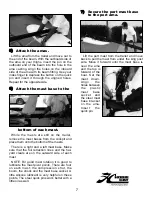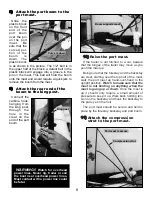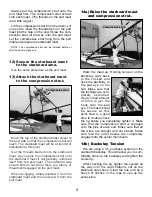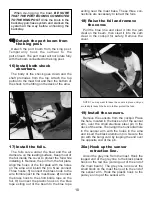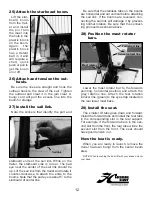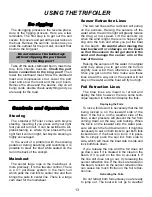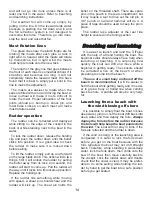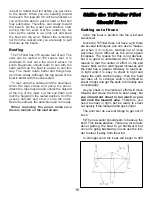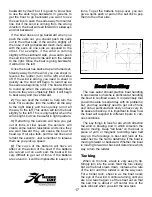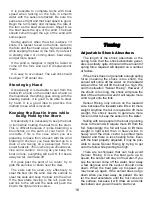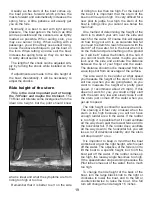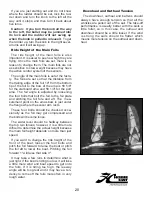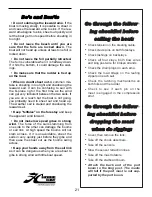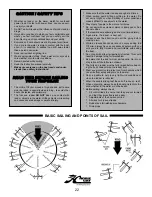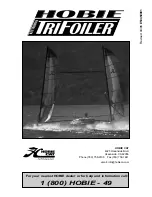
Go through the follow-
ing checklist before
sailing the boat:
•
Check tension on the steering cable.
•
Check clevis pins on both forestays.
•
Check lashings on backstays.
•
Check all four stays, both bow wires
and king post wire for broken strands.
•
Check the drain plugs on each ama.
•
Check the load straps on the reefing
zippers on each sail.
•
Check the latching mechanisms on
both foils and the rudder.
•
Check to see if each pin on the
mast is engaged in the compression
strut.
Go through the follow-
ing checklist before
dropping the mast
when de-rrigging:
•
Cover, then remove the foils.
•
Take off the shock absorbers.
•
Take off the sensors.
•
Stow the sensor retraction lines.
•
Take off the mast rotators.
•
Take off the starboard boom.
•
Attach the back end of the port
boom to the king post. The masts
will fall if the port mast is not sup-
ported by the port boom.
21
Do’s and Don’ts
• Do not submerge the leeward ama.
If the
boat is moving slowly, it is possible to sheet in
and cause the leeward ama to sink. If the lee-
ward ama begins to sink, sheet out quickly and
let the boat get more speed before sheeting in
too tight.
• Do not leave the beach until you are
sure that the foils are locked down.
The
boat will not head up unless at least one foil is
locked down.
• Do not leave the foil partially retracted.
The foil is vulnerable when it is halfway down.
If it hits the bottom, it could damage the cast-
ings.
• Do make sure that the rudder is tied up
on the road.
• When in doubt sheet out.
A common mis-
take is sheeting in too tight and shadowing the
leeward sail. It can be confusing to sail with
the bi-plane rig for the first time as the wind
can get very turbulent between the two sails. If
you are on a reach but the boat is not going,
you probably need to sheet out and head up.
The weather sail is stalled and shadowing the
leeward sail.
• Keep "telltales" on the forestay
and keep
the apparent wind forward.
• Do not make low speed gibes in strong
wind.
The force of the sails slamming from
one side to the other can damage the booms
or sail link. At high speed the booms will not
slam across. If it is unavoidable, sheet the
sails in very quickly just before they gibe and
then ease the sheet out as the booms swing
across.
• Keep your hands away from the sail link
as it can be dangerous when you are about to
gibe in strong wind with little boat speed.
Содержание TriFoiler
Страница 1: ...ASSEMBLY MANUAL...

